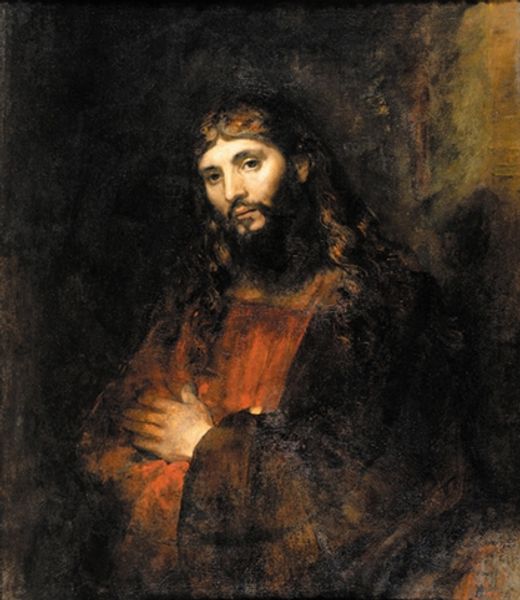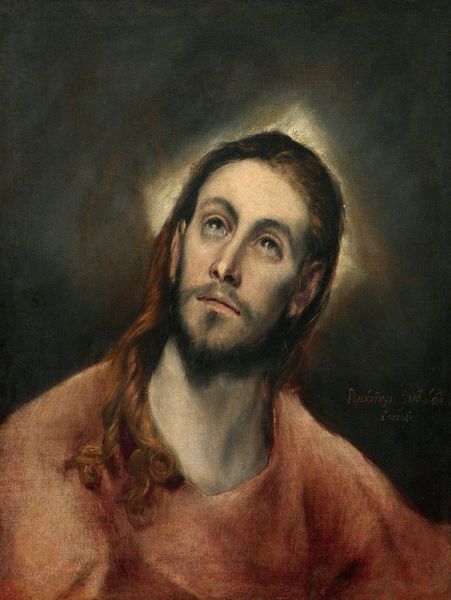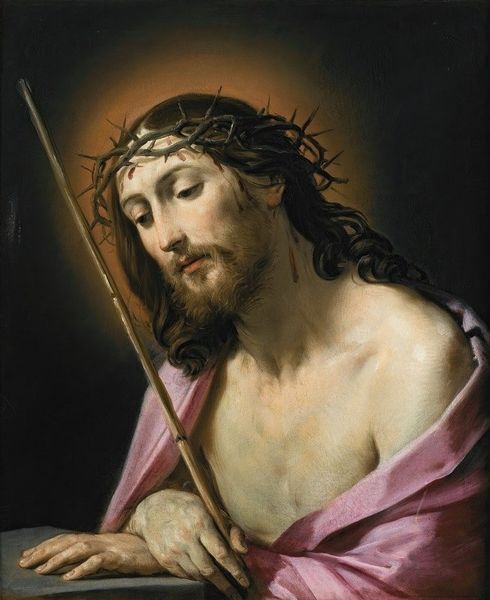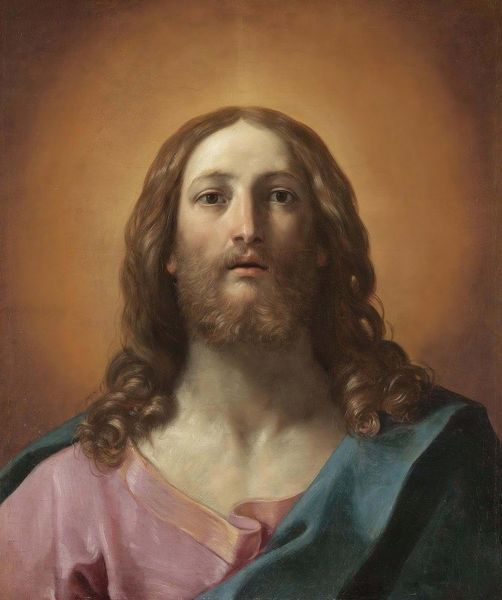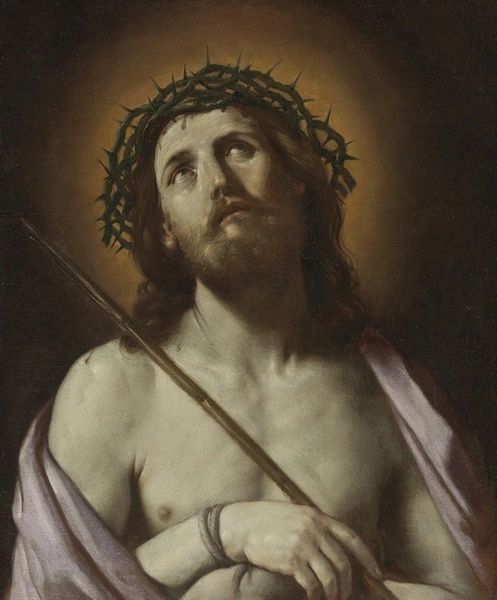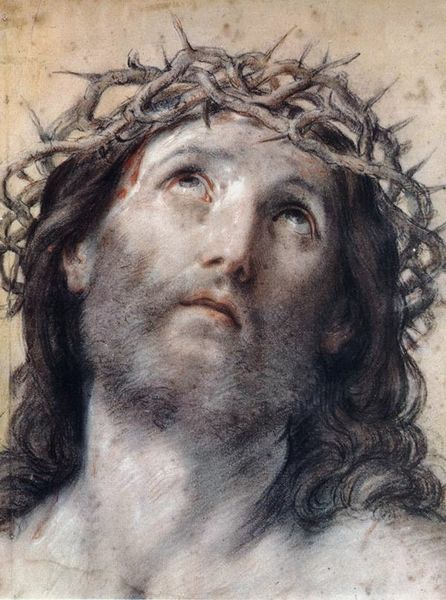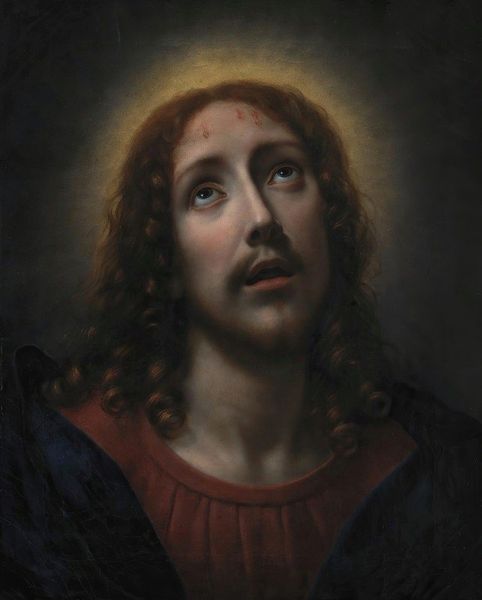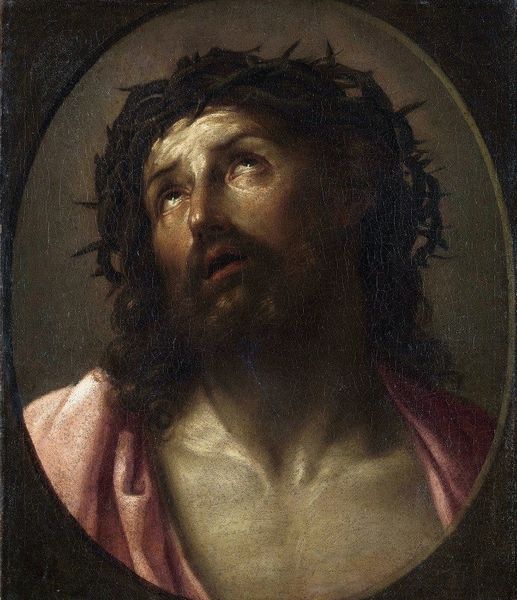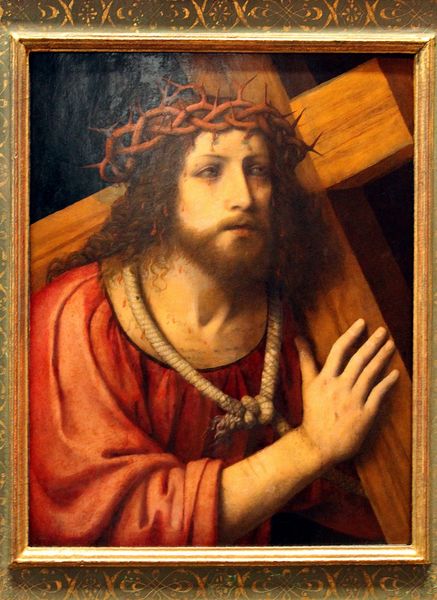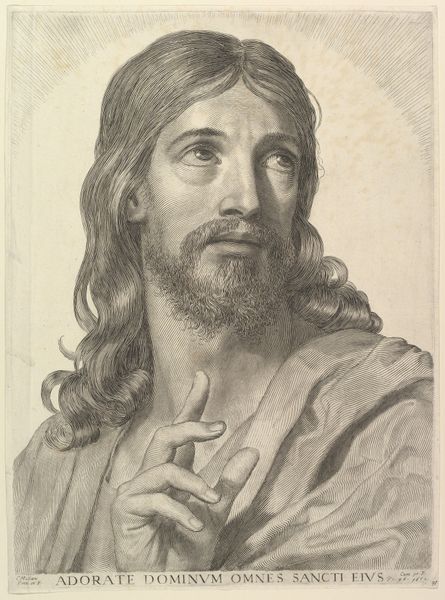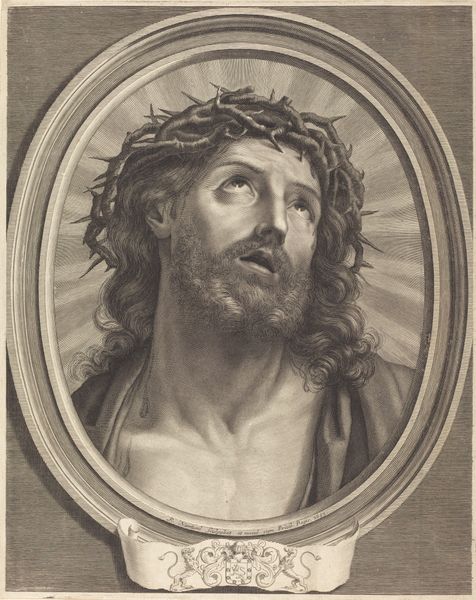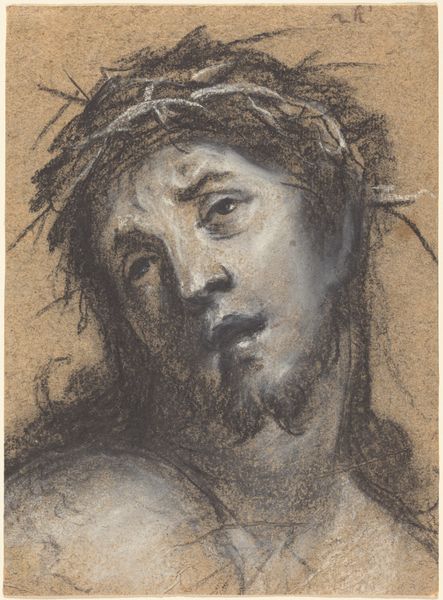
Dimensions: height 10.5 cm, width 9.3 cm, height 16.3 cm, width 14.5 cm, depth 1.5 cm, height 19.4 cm, width 16.4 cm, depth 3.1 cm
Copyright: Rijks Museum: Open Domain
Curator: Here we have, “Christus als man van smarten,” or "Christ as a Man of Sorrows." It's an oil painting, made before 1807 by Ida Jacoba Reigersman. Editor: A somber, moving piece. The downward gaze, the crown of thorns… immediately evokes a sense of profound suffering and resignation. It’s visually striking in its stillness. Curator: The raw physicality is evident; note the clear signs of wounding on the hands. Look at the execution of detail of the twisted rope draped so casually over the ledge. You can feel the coarse texture in the artist’s rendering. Editor: Absolutely, that rope is symbolically potent, likely a reference to Judas's remorse. It enhances the narrative, intertwining guilt, betrayal, and ultimate sacrifice—staples within Baroque history paintings like this. The weight of expectation and predetermined fate almost palpable. Curator: You know, analyzing Reigersman's piece with today's eyes is an interesting contrast. Considering it’s Baroque era, think about the social context where guilds restricted opportunities for female painters. These constraints may explain her concentration on smaller, more private devotionals rather than huge historical pieces. How were gendered restrictions actively shaped her practice in terms of artistic themes? Editor: That adds a layer. Considering constraints helps decode the intensity with which certain themes were engaged. A private devotionals produced for what kinds of material settings or networks? I wonder if we’ll ever know fully how social constraints were expressed by the painter herself through chosen symbolic details. Curator: It highlights the constant tension between available tools, societal expectations, and private expression that influences production, ultimately revealing rich facets within such artistic expression of a somber mood as “Christ as a Man of Sorrows.” Editor: Indeed, it’s not only the immediately religious narrative which is worth examining here, but these quieter threads, reflecting on wider stories woven within each stroke.
Comments
No comments
Be the first to comment and join the conversation on the ultimate creative platform.
